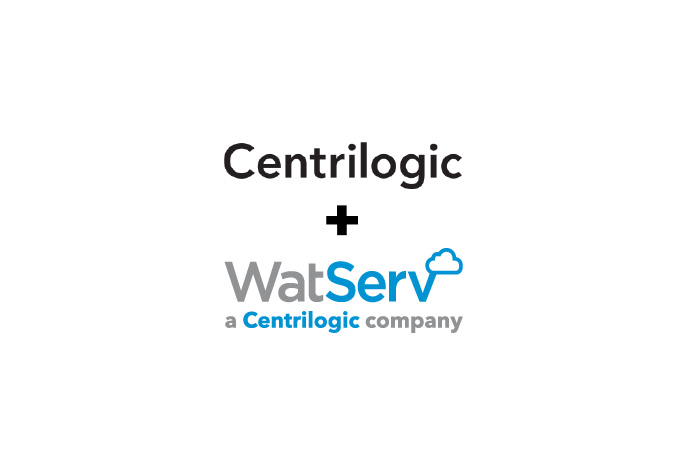Why is the Internet of Things (IoT) So Important for Businesses?
By WatServ
October 10, 2022
The Internet of Things (IoT) is a term used for all physical objects with sensors, software, processors, and other technologies that can connect and exchange data – hence the “Internet.”
If this sounds like a pretty broad category, you’re right. IoT has grown considerably over the past decade in both scope and scale, and is a driving force that’s shaping how we communicate, protect ourselves and each other, and keep multiple sectors (such as manufacturing, healthcare, etc.) healthy.
The IoT is rapidly becoming a top global market, valuing at $761 billion in 2021, and is estimated to grow to $1.38 trillion by 2026. For businesses, including small to mid-sized businesses (SMBs), IoT offers significant opportunity.
In this article, we’ll outline IoT technologies, current use cases and the benefits of adopting IoT technology solutions for your business.

What is IoT Technology?
The possibilities with IoT technology are nearly endless. From enabling autonomous vehicles and artificial intelligence to transforming the workplace and manufacturing processes, IoT has benefits for every sector. But what exactly is IoT technology?
As mentioned above, the IoT is a system of interconnected digital devices that include objects, machines, and even people or pets with unique identifiers and the ability to transmit data over the network.
Those IoT technologies can be categorized into four classes: device hardware, device software, communication, and platforms.
What is IoT Device Hardware?
IoT device hardware are the objects that act as the interface between the real and digital worlds. Devices are capable of connecting digitally via a network (the Internet) are considered IoT device hardware.
Some examples of IoT device hardware include:
- Sensors and actuators
- Telemetry gear and wearable devices, such as smart watches
- Tablet, cell phones and laptops
What is IoT Device Software?
IoT device hardware can’t work without some sort of IoT software. This software is what makes connective devices “smart” by enabling communication with the cloud, as well as performing data collection, device integration and real-time data analysis.
Some examples of IoT device software include:
- Microsoft Azure IoT Central
- Particle
- IBM Watson IoT
What are IoT Communications?
Within IoT, smart objects need a way to exchange information with the rest of the system. This is generally accomplished through a combination of physical connectivity (satellite, LAN, cellular) and certain communication protocols used in different IoT environments.
Some examples of IoT communications include:
- Human to machine (H2M) – this is when humans give inputs to their devices through speech, text, images, etc.
- Machine to machine (M2M) – this is when communication is performed without human involvement through point-to-point connections between network devices.
Machine to human (M2H) – this is when machines give information to humans to help direct their actions.
What are IoT Platforms?
An IoT platform is where all the data IoT devices are collected, managed, processed, analyzed and presented in a seamless way.
There are many IoT platforms on the market, each with its own special attributes designed with specific use-cases in mind.
Some examples of cloud-based IoT platforms are:
- Microsoft Azure IoT Suite
- Amazon AWS IoT Core
- IBM Watson IoT
- Salesforce IoT Cloud
- Cisco IoT CloudConnect
- Oracle IoT
What Are the Benefits for Businesses of IoT Technology?
IoT technology is already being used across many industries and sectors. Here are some examples:
- Manufacturing: Automated sensors help guide engineers to machinery that requires attention, enabling predictive maintenance (PdM) and eliminating the need to schedule periodic maintenance checks. This also helps reduce human error.
- Property management: Factors like air quality monitoring, temperature, ventilation, air conduction and heating, and other property management tasks are being automated with IoT technology.
- Human resource management: IoT technology is being integrated into human resource management through device connection, management of flexible workspaces, monitoring team health and wellness, and monitoring performance in a non-intrusive manner.
- Industrial operations: IoT technology is being used in a variety of industrial operations, ranging from water treatment to toll roads and docks. These can be managed with many sensors that automatically track data and send real-time feedback to engineers.
- Digital twins: These are computer models that allow remote monitoring of complex systems, such as aircraft jet engines. Manufacturers can monitor engines that have been delivered to airlines around the clock using digital twin IoT technology. Problems can be detected early, and regular service can be planned accordingly.
The reason IoT technology has become ubiquitous in so many different sectors is because it offers a wide range of benefits for businesses. Let’s dive into these now.
Here are 7 ways that IoT technology is beneficial for businesses:
1. IoT Makes Processes More Efficient
A main benefit of IoT technology is its power to enable automation. IoT devices can be used for automated control over many operation areas that don’t require human intervention, including logistics like shipping and inventory management, machinery monitoring and automated maintenance, and safety and location tracking. It can also keep track of varying markets, such as real estate and stock markets.
This automation means processes and workflows can become more efficient with less need for human involvement.
Businesses can also rely on data and feedback from IoT systems to improve and enhance their processes, also contributing to an increase in efficiency.
2. IoT Makes Operations More Cost-Effective
IoT technology can reduce costs in several ways.
First, by enabling predictive maintenance (PdM), issues can be detected and solved before they become a problem. This reduces downtime and prevents issues from escalating. In fact, a study by Deloitte found that PdM increases equipment uptime and availability by 10–20% and reduces overall maintenance costs by 5–10%.
Second, as mentioned above, IoT technology can automate complex processes and workflows, and eliminate the need human input in certain cases. This reduces time and costs, as well as cuts down on monotonous jobs, helping with business’ bottom lines and providing avenues of growth where there may not have been without IoT technology.
Finally, IoT in combination with cloud software, improves worker collaboration and facilitates remote work. This means businesses can spend less on commercial real estate, while supporting increased employee productivity from anywhere.
According to research from Harvard Business Review, 58% of companies have experienced increased collaboration through the use of IoT devices.
3. IoT Improves Workplace Safety
Automating systems maintenance helps companies achieve operational safety and compliance with regulations. It also improves working conditions. Human error is less likely to occur, as is worker burnout, safety risks, and costs associated with errors.
In turn, workplace safety improvement makes companies more attractive to investors and partners, which further increases brand value and reputation.
IoT technology devices can also be used for things like risk monitoring, vehicle navigation, fire accident prevention, faster rescue operations and security, keeping both workers and assets safe.
4. IoT Delivers Better Customer Experiences
In today’s competitive marketplaces, customer experience (CX) matters. Consumers expect modern, digitally-enabled experiences and IoT can help deliver on that.
The applications of IoT for CX are far-reaching. From allowing customers to monitor when their shipment is arriving through the mail, to monitoring inventory levels so you never sell out, to enabling personalized communications, to keeping users on track with their exercise plan, IoT touches consumers in almost every area of life.
IoT helps companies understand their users’ behavior, adapt quickly to changing conditions, provide better customer care and ultimately generate more revenue.
5. IoT Improves Decision-Making
While machine learning (ML) is briefly mentioned above, it deserves to be expanded. When ML is combined with IoT, it can create valuable insights that support businesses in making decisions and optimizing operations.
This has a positive feedback effect, making machines more efficient and data more thorough and accurate.
By combining IoT and ML, businesses can also surface previously undetected patterns, eliminate “noise” from data, and reduce bias from decision making. In a world that values data and analytics, this can be a game changer for businesses that want to get ahead.
6. IoT Supports Cybersecurity
When working with an expert third-party provider and the right cloud computing platform, such as Microsoft Azure, pairing IoT devices into your technology stack can help fill gaps through automated monitoring of usage and security alerts.
Because IoT technology is primarily cloud based (with a few exceptions), security is often enhanced. There is little risk of asset loss due to disasters and security maintenance is strengthened.
7. IoT Improves a Company’s Overall Value
Companies that use high-tech solutions, such as IoT technologies, make a positive impact on brand image and value. It shows that the company is staying ahead of the technology curve and hence the competition, therefore providing the best value to its customers and clients.
The use of IoT technology also signals to investors that a company’s offering is cost-effective and efficient. This savings trickles down to clients’ savings as well, whether that’s a direct monetary savings or time savings and asset protection.
Latest technology, such as IoT, also attracts the best talent to the company, which underscores a company’s value.
Work With the Right IoT Partner
Third-party providers that offer IoT technology solutions are invaluable to a company’s efficiency and asset protection.
WatServ is committed to providing the best solutions for your business technology needs. Our IoT architects will work with you to build out a blueprint for your individualized solutions.
To learn more about WatServ’s IoT solutions, visit our Internet of Things Blueprint page.
About
WatServ is an IT solutions provider that helps organizations digitally transform through cloud technologies and managed services.
Serving clients as a trusted advisor since 2006, WatServ provides experience-tested, strategic solutions across all stages of the digital transformation journey. Clients choose WatServ to migrate infrastructure and applications to the cloud, secure critical data, implement disaster recovery, deploy virtual desktop, enable data-readiness for productivity solutions and manage IT environments.
Our clients span a broad range of industries, and we’re a global supplier of IT services for many Brookfield Portfolio Companies. To help our mid-size clients, we provide scalable offerings that simplify cloud adoption and drive business optimization. For enterprise clients, we co-create cloud solutions that enable stability and efficiency for complex IT tools and processes.
With more than 15 years of experience, WatServ has a track record of delivering quantifiable business results and a superior client experience. Ranked as one of Canada’s Top 100 Solution Providers for the last three years in a row, WatServ is always on.

